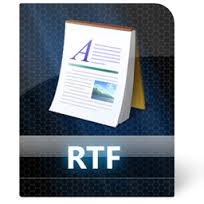Communication
Graphic Novel
Organize
Your graphic novel still needs to have all the major elements of a narrative! Not sure what these are...
- Plot Structure
- Setting
- Character Development
- Conflict
- etc...
Create an outline of your entire story. You don't necessarily have to write out the whole story, only the main points. However, it is at this point that it is essential that you remember the main structure of the short story! Make sure you develop your characters and your plot!!! A graphic novel is not just a picture book! It uses images and words to develop a story; you must do the same.
Storyboard
Now that you have your outline, you need to story board. Story boarding is used by film makers to get an idea of the shots they need, to tell their story. We are going to use storyboarding so that you know what stills you need to tell your story.
For your stills you can draw them if you are so gifted, or you can take pictures. Get your actors together, have a plan of the shots you want, set your actors up, and shoot your stills. You can then upload them to your computer and use any presentation or design software to arrange them in graphic novel formats and add your dialogue.
The most important part of this part of your assignment is your planning. You can download a storyboarding sheet and use it to get a plan for your story. You don't need to spend lots of time drawing your plan out, simple stick man will do. Just make sure you have a clear vision for what that block will look like to accomplish its purpose.
- Storyboard Example
-
Storyboard Templates 

Create
So now that you have a rough idea of the images you will need, you need to create them.
Options for Creating Images
- Take Digital Photos. Set up your story, and take pictures. It will be similar to acting out the story, except you don't have to memorize lines. Get some friends and give them characters. Set up your scenes and take as many photos as possible. That way you have lots of options. Use your digital pictures for your comic.
- Use online software and adopt characters from their database.
- Draw your images. If you are a gifted artist, this will be your best bet.
- OTHER IDEAS?? You may have even better ideas than this to create your images like using Lego! Feel free to message me with some ideas if you need some help
Put it All Together
Now that have all your stills, you just have to put the book together. If you have drawn your book then you're done. Simply scan it and submit it.
If you are still creating it online, you need to upload your images, decide what software you're going to use, and add your dialogue.
Some ideas for creating your graphic novel:
- Photostory - a product for Windows that enables you to create a visual story using graphics/photos, text, audio and video
- Photoshop OR Gimp - create your own comic strip pages, with plot and dialogue bubbles. Save each page and create a slideshow. Save as .swf file.
- Microsoft Power Point OR Open Office Impress - create images and put them on slides.
- Webpage - design a webpage that has links that flow through your story. You will need to send me the link then for the assignment.
- Comic Life - if you have access to this program, you can use it to create the novel. (you will need to export the file as a .jpeg)
- Scan it - if you have chosen to draw your novel, all you need to do is scan it (and save it as .pdf or .jpeg). Be sure to put it together into ONE file, rather than uploading multiple files.
If you have any other ideas of what you would like to do, feel free to message me and discuss options.
Final Review
Once you have completed your Short Story you need to look it over once more and make any changes.
Some questions to ask yourself: Do I have...?
- At least 30 scenes - you may have multiple scenes on one page and are encouraged to have more scenes than 30
- Use of Dialogue - does your dialogue aid your story's development
- Plot development - contains solid plot structure, identifiable conflict and resolution
- Character development - consistent, and developed
- Setting
- Graphics - help develop setting and character, aid the story's development, engaging
- Title
- Evidence of Planning